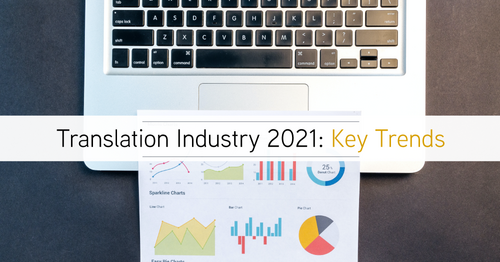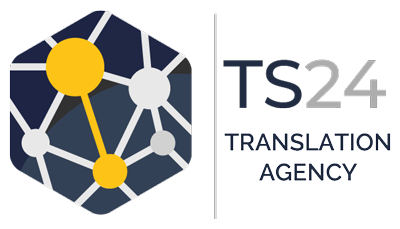6 Key Trends for the Translation Industry in 2021
The unpredictability of 2020 has directly affected several businesses, companies, and entire corporate sectors in the United Kingdom. Both Brexit as well as the world-wide pandemic truly impacted the way businesses operate and, in many cases, affected their revenues. Last January, the early forecasts for the forthcoming 12 months went out the window pretty early on in the year. Covid-19, which turned out to be an economy shaping curveball in practically every country and across every sector, was a factor which not a great number of people saw coming. It changed not only the global economy, but also affected people on more personal levels – from altering the way we work to a dramatic fall in, for example, international trade and travel. With such a great overall impact, it’s no wonder that even the IMF predicts that ‘’the global economy’s long ascent back to pre-pandemic levels of activity remains prone to setbacks”.
As a result, 2021 will be a very difficult, yet crucial and pivotal year for a number of business and corporate industries in the United Kingdom. Despite the definitive Brexit deal and finally ready vaccines for the Coronavirus, companies around the world are likely to still feel some of the negative effects of lockdowns, restrictions and general disturbance in business throughout last year – let alone the continuous constrains in the early months 2021.
Nonetheless, every challenge can be turned into an opportunity, and so the translation industry appears to be one of the few fortunate sectors, which in 2021 may just see growth amid the crisis. This is in part due to the fact, that the industry in general may be better equipped to handle the new challenges in the upcoming year. For instance, majority of UK based translation agencies are naturally prepared for their employees and partners to work remotely from home, and have done so in the past, which may be the new norm amongst several industries for the months to come and still a challenge for many businesses in 2021, regardless of the ground works being laid last year. Another important advantage of the translation industry is the fact, that majority of language service providers (LSPs) work with clients spanning across several different economy sectors and countries, and so they may be less susceptible to abrupt shifts in the economy. Additionally, both the Brexit as well as Covid-19 created enormous amounts of documents and content, which due to the legal reasons, may need to be translated within the international business sector.
Rise in linguists employment
As the demand for general and more expert language services increases steadily due to a continuous globalisation, the employment of interpreters and translators is predicted to grow in 2021. Interestingly, the Bureau of Labour Statistics predicts that between 2019 and 2029 the employment of linguists will grow by 20% – a rate much more rapid than an average for other occupations.
Additionally, News & World Report has ranked interpreters and translators as the best job in the creative & media sector. According to the report, demand will be predominantly driven by an increasing diversity and a growing demand for globalisation, the report states that: “Job prospects are especially bright for those fluent in Chinese, German, Russian, Portuguese, and Spanish.” The report notes that Sign-language interpreters should also expect to see increased employment due to new the popularity of technology such as video remote interpreting.
Medical & Pharmaceutical translations
The current situation around the world tied with coronavirus outbreak will without a shadow of a doubt lead to an increase in demand for medical translations – for both – private as well corporate use. In fact, many experts predict that medical translations will see the fastest growth in 2021 amongst all document types. There are several factors, which may indeed make these forecasts come true – from the Covid19 vaccines being made widely available to the public to a rapidly growing number of people accessing healthcare services.
Continuous developments in Artificial Intelligence
Artificial Intelligence (AI) has been around in one form or another for quite a while now; and we can see its effects on pretty much every corporate industry and business sector – the translation industry is no different. But is Artificial Intelligence the same as Machine Translations? Not quite…
With all the hype about Google or Amazon Translate or the Chinese iFlytek – a person could be forgiven for believing that there are perhaps no more human translators left in the world and that the machines have already fully dominated the language industry. Yet, although machines are definitely making inroads into the industry, they are still only used to translate some very straightforward texts for internal use, such as short memos. Other materials – such as marketing, business, creative or medical documents, books, articles or materials which need localised approach, still require a human linguist, and it is predicted that things won’t change any time soon.
Nonetheless, human translations aren’t quite what they used to be, and although machines haven’t taken over the industry, Artificial Intelligence have definitely changed the way most translators work.
AI is the primary focus of development companies, which create Computer-aided Translations (CAT), which allow human linguists and translators to create text from scratch. Tom Davenport has said in a recent Forbes article that: “These “computer aided translation” (CAT) tools don’t do all the translation work—the human translator is still pretty much in charge of the process—but they can make the job much easier and faster. It would be difficult or impossible for a human alone, no matter how good a translator, to keep up with a human employing a good CAT system.”
The article points out that the CAT tools, thanks to the developments in Artificial Intelligence, have become increasingly sophisticated in the recent years. Deep learning algorithms allow the tool to continually learn from the human translator, becoming familiar with their translation style, vocabulary and preferences – and adapt to reflect these – resulting in context-based output and suggestions.
As this field continues to develop, a growing number of professional human translators is expected to adapt CAT tools into their work in 2021 – allowing them to work faster and more consistently.
Remote Interpreting
Although remote video interpreting has been widely available for several years now, due to the world-wide pandemic, we have only truly witnessed growth in demand for this service in 2020. The Remote interpreting can be used across a wide range of environments – from business meetings to hospitals as well as courtrooms. With a number of restrictions affecting the way businesses operate still in place, the demand for VRI is predicted to increase even further during 2021.
Post-havoc globalisation
A post-COVID and post Brexit-turbulence economy in 2021 will be extremely fragile. For a number of business and corporate sectors, this means exploring every possible channel in order to recover their losses. One of such channels will be approaching some of the emerging economies in, for example, Africa or Asia – where demand for products/services is high yet the markets aren’t saturated.
As practically every corporate sector in the United Kingdom had been severely affected by last year’s turbulences, businesses and organisations from essentially every corporate segment will require professional translations when approaching their target market.
Reliability more important than ever
Within a chaotic and unpredictable economy, a reliable translation partner can prove to be the difference between an international success and a spectacular failure. As a result, businesses requiring professional translation services will look for trustworthy agencies with a proven record more intensely than ever before.
2021 won’t be the year where budgets and time can be wasted. Consequently, those organisations intending to approach international markets this year will require competitive prices and expertise from the very beginning. Translation providers specialising in different fields – such as marketing, legal or financial – who moreover have the capability of covering several languages are predicted to be in high demand.
In addition, because operating costs will be limited for a large portion of UK companies in 2021, translation providers who are also able to offer further services – such as multilingual copywriting, localisation or DTP will benefit.
As a one-stop language services agency, we offer a comprehensive approach – from professional translations and interpreting services to localisation or desktop publishing. Our translation agency works with some of the world’s largest brands and covers more than 200 languages from every corner of the world. Regardless of the uncertainty of the upcoming 12 months, Translation Services 24 are always able to accommodate your specific requirements, helping you in reaching your company’s full international potential in 2021. Get in touch today.


